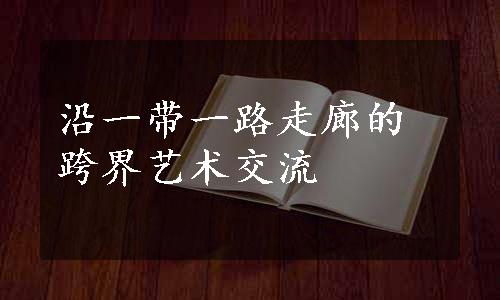
The Intercultural Relations and Communication Along the One Belt One Road Corridor
The topic is about a bold vision of transforming the economic and political landscapes of Asia and Africa over next decades.
It has been widely reported in the international media as proposing the network of the infrastructure partnerships.They cross a variety of areas of energy,transportation,telephonication and IT.The transportation infrastructure is always described as the most significant one,because it strengthens the geopolitical shape.
It has an enormous scope,we find 6 corridors altogether,here are Fig.1.
And as a consequence,when we link them up,we have a belt,and there is a road—it is so called as the 21st century Maritime Silk Road,which starts from the South China Sea,and across the Indian Ocean,finally it can reach the Mediterranean areas.It has a number of cooperation priorities,they are:
Fig.1
●policy coordination
●facilities connectivity
●unimpeded trade
●financial integration
●people to people bonds
The development of infrastructure like railroads and so on has already drawn people's attention.But also,the people to people bonds,has received less attention on the media,because it's not easy to be reported in terms of impressive contracts or millions of dollars'investment,yet the ultimate goal proposed by the Chinese President Xi Jinping,is to promote the friendship among different nations of people and make a more peaceful world.In my talk,I would like to refer some of the aspects about culture and people.
Today,my talk does not focus on a material culture,I will focus more on the invisible part of the culture,which they often use the model of iceberg to explain the hidden part of the culture(Fig.2).
Fig.2(www.xing528.com)
As you can see,the material objects,they are above the waterline.And as we all know,the part of the iceberg,which is above the waterline,only takes up one fourth of the mass of the entire iceberg.However,the other enormous part we cannot see,which is the invisible part of the culture,the values,the beliefs,are underneath the waterline.This part is the foundation of our cultural confidence.
So,thinking about the Silk Road,to a European like me,you may have images of exhausted people among caravans and camels,travelling for the Central Asian business,bringing goods in exchange,distinguished languages have been spoken,yet such images can be romantic because of the concept of orientalism,which appeared in the book of Edward Waefie Said in 1978.
In his book,he examined the European politically,and he found that,deep in Europeans'thought,the most important use of Orientalism to the Europeans was for the commerce,his theory has divided the world into the East and the West(Fig.3).
It is significant that now China has close relationship with central Asian countries and become a dominant economic power in the East,and it's interesting to find that the concept of Silk Road is originated from China.Another significant aspect is that the Belt and Road concept is initially a nonwestern discourse.The Silk Road is also considered as a historical construct.
Fig.3
On one hand,it has been constantly looking back,evoking all the connective parts to find the cultural and historical connection.And,in other purpose,it allows new central Asian nations to share their precious heritage.Here I want to address the concept of soft power,which focuses on how states and countries broaden their reputation,build their brands for their own social and cultural goods.Even though the traditional Silk Road has been lost in time,the historical relations and contemporary relations,no matter positive or negative,will be well-remembered.
So the question is that,how do the participant countries from the Corridor cooperate across so many boundaries?That will influence their intercultural relations as the One Belt One Road Program is on its way.Social psychology says that we make rational actions based on the way we collect information.It's not an objective process,but an influence of our emotions.And we found the variety of allegiances,such as political,ethnic,religious and cultural ones.
Stereotypes are very common in the cultural relations,and sometimes they can get in the way when we're having intercultural communication.So there are challenges(Fig.4).
Fig.4
At the political macro level,there are political sensitivities in the region among central Asian nations.There are also ethic differences in the same country,and perceptions that keep the balance of power have been emphasized by the people.But,it's in the micro level where the interpersonal relationships happen.When we are having intercultural communication on the Silk Road,it's inevitable that people from different nations will work together and communicate.The conversation may become a crash between the totally different cultures.We have to notice the high degree of power distance and high level of collectivism as well,because the most significant influence in cultural difference is the power distance(Fig.5).
Confronted with those challenges,intercultural awareness training is essential.There should be cultural exchanges in order to create an opportunity for the people who are in different cultures,to provide them with a brandnew experience of another broad and profound culture,which means crosscultural interactions.We also need specialized training and human resource development,we need some professional workers to take the specific responsibility for the intercultural communication projects.Another significant part is,when we are communicating with others from the Corridor country,we should have the intercultural awareness,and show the respect,be transparent,and give each other enough trust.With those measures,we can make the communication much smoother.That's all I want to share in my talk today.
Fig.5
免责声明:以上内容源自网络,版权归原作者所有,如有侵犯您的原创版权请告知,我们将尽快删除相关内容。




